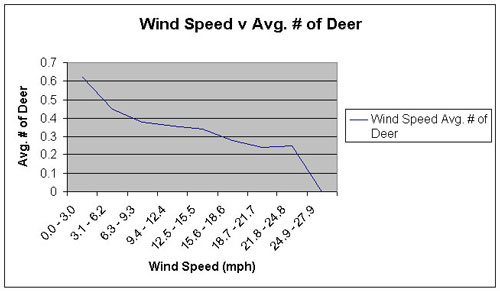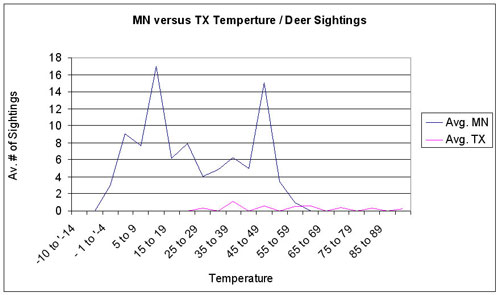 White-tailed deer are resilient survivors. Their numbers have expanded wildly over the past 100 years, primarily because they are highly adaptable. They beat adversity at virtually every turn of environmental fate. Over time they have withstood and recovered from much of the worst that Mother Nature could throw at them, including naturally occurring resource famines resulting from droughts, floods or wildfires charring prime whitetail habitats. Then there are the tornadoes that ravage and uproot exceptional forest, field and lowland habitats. Consider the habitat damage done by hurricanes Katrina and others and their devastating impact on deer. In every one of these cases, however, the whitetail herds rebound. We might call that “staying power.” White-tailed deer certainly have that, among numerous other traits that compel them to withstand virtually every natural pitfall.
White-tailed deer are resilient survivors. Their numbers have expanded wildly over the past 100 years, primarily because they are highly adaptable. They beat adversity at virtually every turn of environmental fate. Over time they have withstood and recovered from much of the worst that Mother Nature could throw at them, including naturally occurring resource famines resulting from droughts, floods or wildfires charring prime whitetail habitats. Then there are the tornadoes that ravage and uproot exceptional forest, field and lowland habitats. Consider the habitat damage done by hurricanes Katrina and others and their devastating impact on deer. In every one of these cases, however, the whitetail herds rebound. We might call that “staying power.” White-tailed deer certainly have that, among numerous other traits that compel them to withstand virtually every natural pitfall.
The Seasonal Exception
There is one huge red mark in the whitetail ledger book. It’s a rather simple turn of nature, but its impact is certain, far-reaching and consistent. It’s winter. Cold weather can wield a cruel yet predictable influence on deer behavior, herd health and survival rates for does and bucks, adults and yearlings.
Obviously a harsh winter in Minnesota, Michigan or Wisconsin and its frigid conditions with landscape-starving ice and snow might be more treacherous for deer than a winter in Texas or Mississippi, but cold temperatures exact a toll on deer in different ways in different parts of the country. Deer behavior changes accordingly.
Research by Jon Stone in Texas and T. R. Michels (www.trmichels.com) in Minnesota illustrates deer activity in relation to temperature. Minnesota deer move more in lower temperatures, while Texas deer move more in warmer temperatures. However, there are upper and lower limits that tend to restrict deer movements. This is vital information for hunters to calculate into their winter hunting strategies.
Whitetails react differently in cold weather no matter where they live. Hunters must learn what deer do to survive and how they react to ever-changing winter atmospheric conditions. Comprehending exactly how deer alter their usual seasonal behaviors to adjust to winter conditions can make the difference in filling a tag. Completely grasping this information is essential for being consistently successful at hunting deer in cold temperatures and inclement winter weather.
For example, whitetail researcher Charles Alsheimer reports, “We’ve learned deer can bed as much as 90 percent of the time in winter, and as little as 30 percent of the time during the rut.” Deer observations might decline during cold spells, but the animals have to move sometime. The key is discovering the most likely times that deer will finally be on the move for the day. Deer hunters should learn these winterizing behavioral habit changes. They can then apply this knowledge to how they hunt cold-weather deer. This subtle biological behavioral information can yield surprisingly positive results at the meat pole as well as the trophy room.
The Chill Factor
Cold weather is more than a low air temperature. An energy-sapping cold winter temperature can actually be a combination of several atmospheric factors that merge together to create the full bone-chilling impact on deer and hunters alike. When most or all of these factors come together at the same time, the results on deer, even over a relatively short period of time, can be devastating to herd health, rutting activity and ultimate survival through the winter.
Regardless of a whitetail’s range, it is certain that one or more of these winter climate factors will occur at the same time. The more factors added to the mix, the tougher it is on the deer to sustain themselves. Hunters certainly need to understand these factors, too, and how they impact hunting opportunities and strategies.
These various climate elements include actual air temperature, wind speed, wind direction, cloud cover, dew point, humidity, barometric pressure, wind chill, thermal currents and precipitation including type, quantity and duration. Real cold is made up of a lot of things, with each adding its own extra degree of discomfort to deer and deer hunters.
A Texas research project conducted by Jon Stone involved whitetail observations relative to wind speed. The study shows a direct relationship between deer activity and wind velocity. The harder the wind blew, the less deer moved around. The break point in wind speed seemed to be around 15 miles per hour. Consider, then, about adding, say, a freezing 32 degrees on top of that. Hunters will want to monitor air temperatures as well as wind speed when deciding hunting tactics for the day.
The weather information presented here is not a short course in meteorology. However, deer hunters must recognize and learn to appreciate how various weather elements can affect deer behavior in the winter. The weather can change travel habits, feeding rituals, yarding practices and bedding area choices, and it can completely alter deer’s normal activity schedules.
How Deer Weather The Winter
 Whitetails have a number of physiological attributes that are naturally oriented toward environmental adaptation aimed at survival. These genetic characteristics really kick in during long, cold winters. This is true across the country, from the Far North to the Deep South.
Whitetails have a number of physiological attributes that are naturally oriented toward environmental adaptation aimed at survival. These genetic characteristics really kick in during long, cold winters. This is true across the country, from the Far North to the Deep South.
As summer mellows toward fall and then into winter, the photoperiod daylight cycle becomes shorter. This triggers a whole series of biochemical changes in deer that research has shown to be responsible for a wide variety of signals being switched on in a deer’s neurological and biochemical systems, instinctively preparing it for the changing seasons.
These changes also prompt such activities as territory-marking, including rubbing, scraping and scenting, and the actual rut breeding sequence behaviors. Other changes are designed to get deer ready to withstand Mother Nature’s worst.
Whitetails sensing the slow drift toward winter will begin to eat more and more to add fat layers all around their bodies. These fat stores will carry them through the rut and lean times as the dead of winter wears on. Such gorging is prevalent in northern states, where deer are typically much larger with greater body mass and weight than deer in other parts of the country. However, deer everywhere do this to one degree or another. We even see these heavy fat layers on does and bucks at our skinning racks in Mississippi.
Deer also shed their lightweight “red” summer coats, replacing them with a heavy darker gray coat of hollow, insulating hair engineered to absorb more thermal heat from the sun. The winter fur coat also helps to retain body heat, burn stored body fat slower, and conserve calorie expenditure from exposure to the elements. The metabolism of whitetails also slows down to rates that permit the further saving of caloric burn-off and body energy.
Deer will also do a number of other things, albeit instinctively, in winter to protect themselves. For instance, whitetails will hide out in dense cover, preferably on the south side of steep hills, to shield themselves from cold wind and snow. Cedar thickets or pine plantations are classic deer shelters. Around prime feeding areas, so long as the food lasts, deer will yard-up, standing rump-to-shoulder in a maze of bodies, protecting one another to some degree. Find such congregations of does and eventually the bucks will show up, too.
Hunting approaches can vary, but they all key on how deer react to weather that often is bitterly cold.
Darwin Hamilton of Escanaba, Mich., knows how to hunt deer when the thermometer plummets. “When we hunt in the winter, the temperatures with wind chill can dip to 20 or 30 below zero,” says Hamilton. “We build small enclosed ground blinds in the swamps. Then we wade through the snow to sit for an hour, maybe two, before we have to go back to the truck to warm up. We might do this cycle three or four times a day. Deer have to forage for some kind of food eventually, so we hope to catch a buck venturing forth before we freeze out.”
Likewise, match what you know about a whitetail’s winter behavior to your hunting territory to develop a strategy for success.






